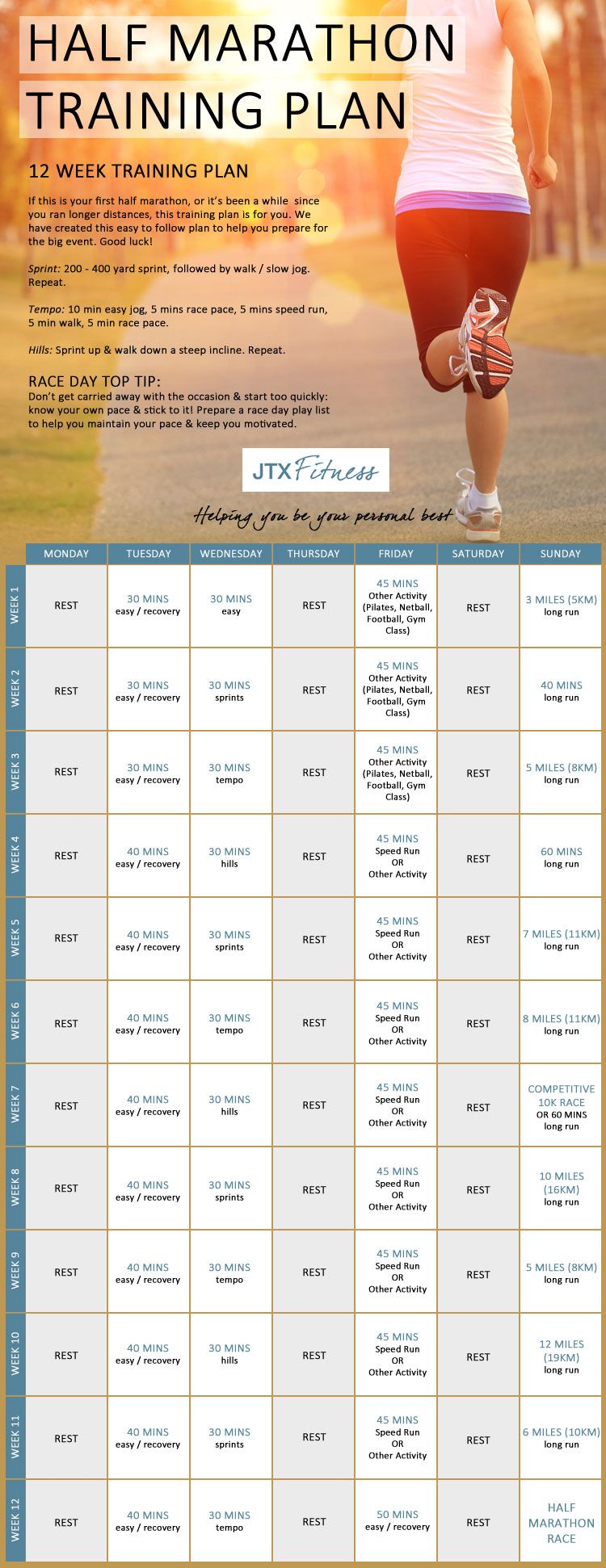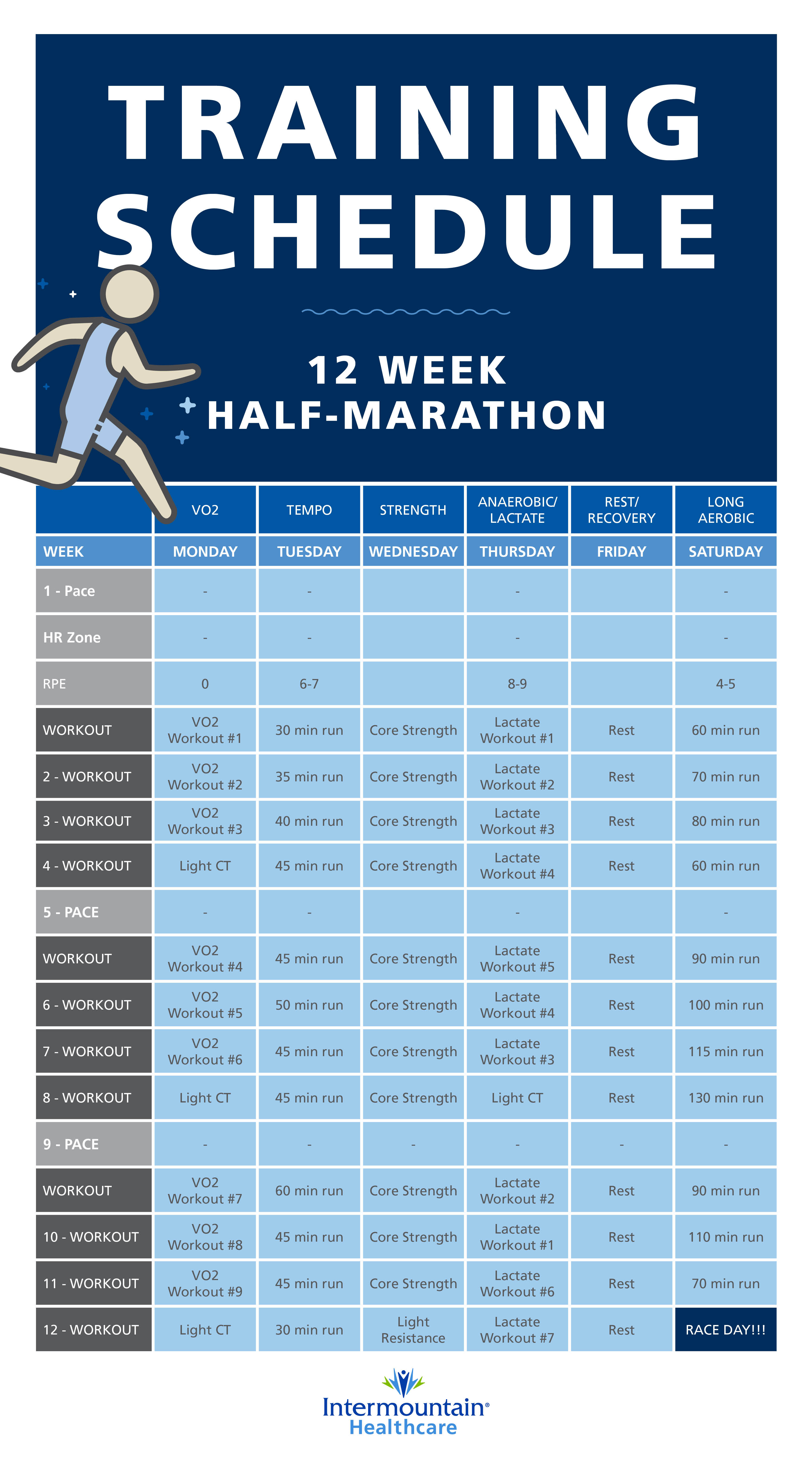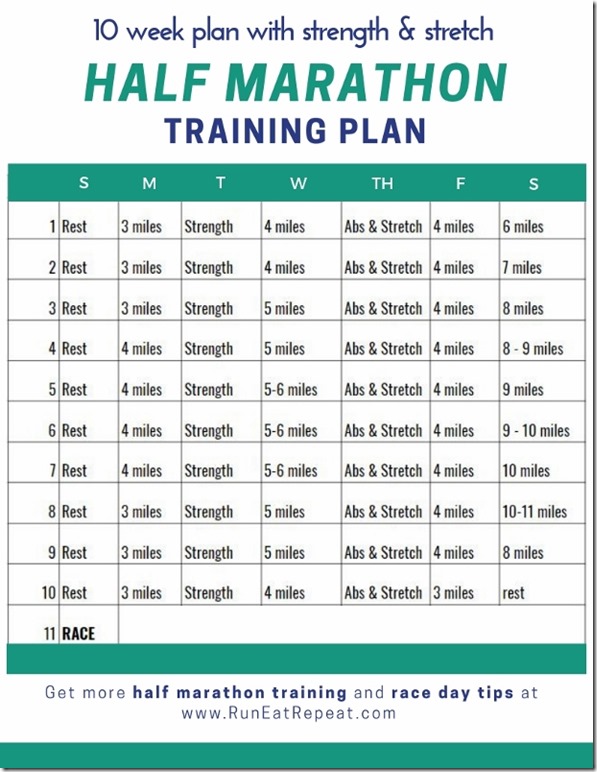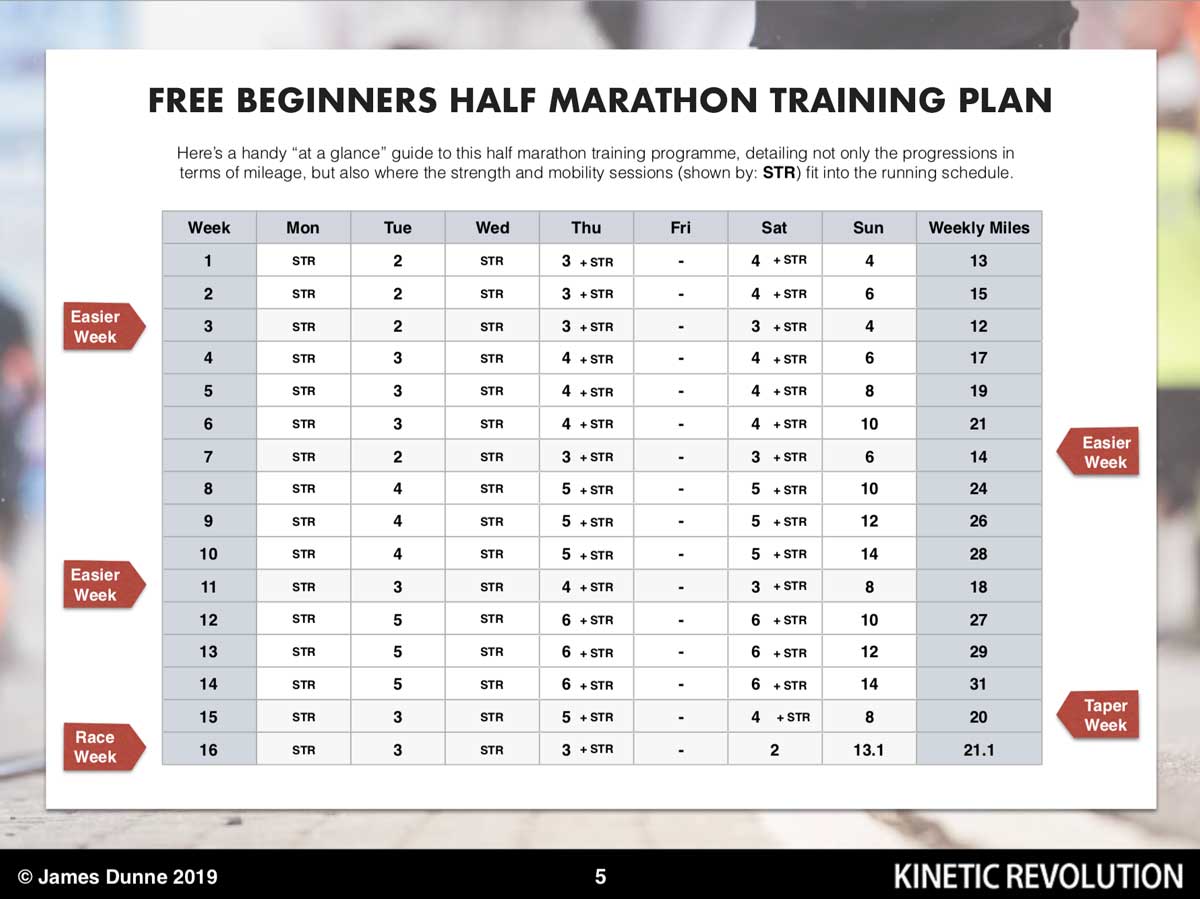Why an 11-Week Training Program for a Half Marathon?
Embarking on a 11-week training program for a half marathon offers numerous benefits to aspiring runners. This carefully designed timeframe allows participants to prepare effectively while minimizing the risk of burnout. By focusing on gradual progression and strategic goal-setting, runners can optimize their performance and enjoy a rewarding race day experience.
One of the primary advantages of an 11-week training program for a half marathon is its time efficiency. Many individuals lead busy lives, juggling work, family, and social commitments. A condensed training schedule enables runners to balance their running goals with other responsibilities, making it a practical choice for those with limited time.
Additionally, an 11-week program fosters a sense of focused progress. By setting realistic milestones throughout the training period, runners can track their development and maintain motivation. This structured approach helps to build confidence, ensuring that participants feel well-prepared and excited for race day.
Moreover, an 11-week training program for a half marathon reduces the likelihood of burnout. Overextending oneself with an overly ambitious or lengthy training plan can lead to mental and physical exhaustion. By contrast, an 11-week program strikes an optimal balance between challenge and sustainability, allowing runners to maintain enthusiasm and dedication throughout the training process.
Setting Realistic Goals: Assessing Your Running Capabilities
Before diving into an 11-week training program for a half marathon, it’s crucial to evaluate your current running abilities. By understanding your pace, endurance, and strength, you can set realistic goals and tailor your training program accordingly. This initial assessment will help ensure a safe, enjoyable, and successful running experience.
To begin, determine your current running pace by timing yourself during a 5K or 10K race, or while running a consistent distance on a track or treadmill. This information will provide a baseline for your training, allowing you to track your progress and adjust your goals as needed.
Next, evaluate your endurance by considering the farthest distance you’ve recently run. If you’re new to running or have taken an extended break, starting with a 5K or 10K distance is a reasonable goal. For more experienced runners, a half marathon distance may already be within reach. Regardless of your starting point, building endurance gradually and consistently is key to a successful 11-week training program.
Lastly, assess your strength, both as a runner and in terms of overall physical fitness. Incorporating strength training exercises, such as squats, lunges, and core work, into your routine will help improve your running performance and reduce the risk of injury. Additionally, consider factors such as flexibility, balance, and agility, which contribute to overall running efficiency and injury prevention.
Creating a Balanced Schedule: Integrating Running and Rest
A well-structured 11-week training program for a half marathon incorporates a balance of running and rest. By designing a schedule that includes rest days and cross-training activities, you can optimize your performance, reduce the risk of injury, and maintain enthusiasm throughout the training process.
Rest days are an essential component of any training program, allowing your body to recover and rebuild. Aim to include at least one or two rest days per week, spacing them throughout the training schedule. During rest days, engage in light activities, such as walking, stretching, or yoga, to maintain flexibility and promote overall well-being.
Cross-training activities, such as swimming, cycling, or strength training, offer numerous benefits for runners. By incorporating these activities into your training schedule, you can improve your overall fitness, build strength, and reduce the risk of injury. Additionally, cross-training can help alleviate boredom and monotony, keeping you motivated and engaged throughout the 11-week program.
When designing your training schedule, consider factors such as your personal commitments, work schedule, and family obligations. By creating a balanced and flexible schedule, you can ensure that you have the time and energy necessary to commit to your running goals while maintaining a healthy work-life balance.
Building a Strong Foundation: Base Training and Endurance
The initial phase of an 11-week training program for a half marathon focuses on building a solid base and increasing endurance. This foundation-building period lays the groundwork for the more intense training phases that follow, ensuring that you’re well-prepared and able to handle the demands of the program.
During the first few weeks of the training program, prioritize building a strong aerobic base. This can be achieved through consistent, moderate-intensity running, gradually increasing your weekly mileage. Aim to increase your mileage by no more than 10% each week to minimize the risk of injury and allow your body to adapt to the increased workload.
In addition to building your aerobic base, focus on increasing your endurance during this phase. Incorporate longer runs into your weekly schedule, gradually extending their duration over several weeks. For example, if you’re currently able to run 5 miles comfortably, aim to increase your long run by a half-mile to a mile each week, reaching a peak distance of 10 to 12 miles by the end of the base training phase.
Throughout the base training phase, listen to your body and adjust your training plan as needed. If you experience any discomfort, pain, or fatigue, consider taking an extra rest day or reducing your mileage. Remember, the goal of this phase is to build a strong foundation, not to push yourself to the limit. By focusing on gradual progression and consistent training, you’ll set yourself up for success in the more challenging phases of the 11-week training program.
Enhancing Performance: Speed Workouts and Interval Training
As you enter the middle phase of your 11-week training program for a half marathon, it’s time to focus on improving your performance through speed workouts and interval training. These targeted training methods can help you increase your pace, build strength, and develop the mental fortitude necessary for a successful race day experience.
Speed workouts involve running at a faster-than-normal pace for short intervals, followed by periods of active recovery. These workouts can include techniques such as fartleks, hill repeats, and track intervals. By incorporating speed workouts into your training schedule, you’ll challenge your cardiovascular system, build muscular endurance, and improve your running economy.
Interval training, on the other hand, involves alternating between high-intensity and low-intensity exercise. For example, you might run at a near-sprint pace for 30 seconds, followed by a slower jog for 90 seconds. This cycle can be repeated for a set number of intervals, with the goal of pushing your limits and increasing your overall fitness level. Interval training can help you build speed, power, and mental resilience, making it an essential component of any well-rounded training program.
When incorporating speed workouts and interval training into your 11-week training program for a half marathon, be sure to start slowly and gradually increase the intensity and duration of these workouts. Listen to your body and adjust your training plan as needed, taking extra rest days or reducing your mileage if you experience discomfort, pain, or fatigue. By focusing on gradual progression and consistent training, you can maximize the benefits of these challenging workouts and set yourself up for success on race day.
Preparing for the Big Day: Long Runs and Tapering
As the half marathon approaches, the final phase of your 11-week training program is crucial for ensuring that you’re well-prepared and ready to perform your best. This phase focuses on long runs and tapering, allowing you to build endurance, fine-tune your race strategy, and recover from the demands of the training program.
Long runs are an essential component of any half marathon training program. These extended runs, typically scheduled for the weekends, help you build the physical and mental stamina necessary for covering 13.1 miles. As you enter the final phase of your 11-week training program, gradually increase the distance of your long runs, aiming to reach a peak distance of 10 to 12 miles a few weeks before the race. This will help you build confidence, familiarize yourself with the demands of a half marathon, and ensure that you’re well-prepared for race day.
Tapering, or reducing your training volume and intensity in the weeks leading up to the race, is another critical aspect of the final phase of your 11-week training program. By cutting back on your mileage, you allow your body to recover from the rigors of training, ensuring that you’re well-rested and ready to perform your best on race day. A typical tapering period lasts two to three weeks, with the most significant reductions in mileage and intensity occurring during the final week before the race.
During the tapering period, focus on maintaining your fitness level and staying sharp, rather than attempting to set personal bests or achieve new milestones. Engage in light cross-training activities, such as swimming, cycling, or yoga, to maintain your cardiovascular fitness and flexibility without overtaxing your body. Additionally, prioritize rest and recovery, ensuring that you’re well-rested and ready to tackle the challenges of the half marathon.
Staying Motivated and Injury-Free: Tips and Tricks
Staying motivated and avoiding injuries are essential components of a successful 11-week training program for a half marathon. By incorporating practical tips and strategies into your training plan, you can maintain your enthusiasm, protect your body, and ensure that you’re well-prepared for race day.
To stay motivated throughout the 11-week training program, consider the following tips:
- Set clear, specific, and achievable goals. Having a tangible objective can help you maintain focus and motivation during challenging moments.
- Mix up your training routine. Incorporating a variety of workouts, such as tempo runs, hill repeats, and long runs, can help prevent boredom and keep your training fresh and engaging.
- Find a training partner or join a running group. Sharing your journey with others can provide a sense of camaraderie, accountability, and support, making the training process more enjoyable and rewarding.
- Track your progress. Keeping a training log or journal can help you monitor your improvements, identify trends, and stay motivated as you see the results of your hard work.
- Reward yourself. Celebrate your achievements and milestones, both big and small, throughout the training program. This can help maintain your motivation and provide a sense of accomplishment as you work towards your goal.
To avoid injuries during the 11-week training program, follow these guidelines:
- Gradually increase your mileage and intensity. Avoid sudden spikes in training volume or intensity, as these can increase your risk of injury. Instead, aim to increase your mileage by no more than 10% each week.
- Listen to your body. If you experience pain, discomfort, or fatigue, take extra rest days or reduce your mileage as needed. Ignoring early warning signs can lead to more significant issues down the line.
- Incorporate rest days and cross-training activities. Giving your body time to recover and rebuild is essential for preventing injuries and ensuring that you’re well-prepared for race day.
- Invest in high-quality running shoes. Wearing shoes that are well-suited to your foot type and running style can help prevent injuries and ensure that you’re comfortable during your training sessions.
- Prioritize flexibility and mobility. Engaging in activities such as yoga, stretching, or foam rolling can help improve your range of motion, reduce muscle tension, and prevent injuries.
Celebrating Your Success: Race Day and Beyond
Congratulations! You’ve completed your 11-week training program for a half marathon, and race day is finally here. By following a well-structured and balanced training plan, you’ve built a solid foundation, improved your endurance, and honed your racing skills. Now it’s time to put all of your hard work to the test and enjoy the thrill of race day.
To make the most of your half marathon experience, consider the following tips:
- Plan ahead. Familiarize yourself with the race course, parking options, and any other relevant details. This can help reduce stress and ensure that you’re well-prepared for race day.
- Arrive early. Give yourself plenty of time to check in, use the restroom, and warm up before the race starts. Arriving early can help you feel more relaxed and focused, allowing you to perform your best.
- Stay hydrated and fueled. Drink plenty of fluids and consume a light snack, such as a banana or energy gel, before the race. During the race, take advantage of water stations and fueling opportunities to maintain your energy levels and avoid dehydration.
- Pace yourself. Start the race at a comfortable pace, and avoid the temptation to go out too fast. Focus on maintaining a steady, sustainable rhythm, and save your energy for the final miles of the race.
- Enjoy the experience. Smile, wave to spectators, and soak up the atmosphere. Running a half marathon is a significant accomplishment, so take the time to appreciate your hard work, dedication, and achievements.
After the race, prioritize post-race recovery to help your body repair and rebuild. This can include activities such as stretching, foam rolling, and light cross-training. Additionally, be sure to rehydrate, refuel, and get plenty of rest in the days following the race. By taking care of your body and allowing it time to recover, you’ll set yourself up for success in your future running endeavors.
As you reflect on your half marathon experience, consider setting new running goals and challenges. Whether you’re aiming to improve your time, tackle a new distance, or simply maintain your current fitness level, a well-structured training plan can help you achieve your objectives and continue your running journey.








